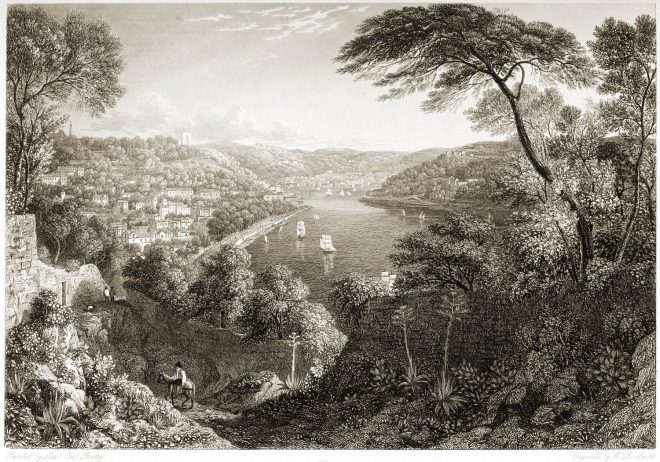View of the city and the Douro River from the verge of the granite precipice on the north side of the Douro.
Category: Genre
Oporto. The busy scene of the Custom-house Quay.
At the Ribuleira-street, a very interesting view presents itself. The foreground is occupied by the busy scene of the Custom-house Quay.
The life of Jack Rattenbury, nicknamed Rob Roy of the West.
Jack Rattenbury. The smugglers; picturesque chapters in the story of an ancient craft by Charles George Harper.
View to the most ancient part of the city of Oporto from Villa Nova.
The annexed view, taken at the foot of the Serra, near the Bridge of Boats, exhibits the most ancient part of the city of Oporto.
Full view of the city of Oporto, from the Quay of Villa Nova.
Leading the spectator onward, and crossing to Villa Nova on the southern bank of the Douro, we come in full view of the city of Oporto
Oporto, from the Monte D’Arabida. Portugal 1832.
A view of the city of Oporto as seen from the Monte d’Arabida, looking directly up the majestic and beautifully winding Douro.
Oporto. The Mouth of the Douro from Massarelos.
The approach to Oporto by sea is remarkably beautiful. The view given in the vignette is taken from the garden of the Quinta of Senhor Joao Pacheco.
The Colonnade of Congress Hall, Saratoga Springs.
The Congress Hall has for many years held the palm of fashion among the rival Hotels of Saratoga.
Saratoga Lake. The beauty of the freshwater lake.
The Mohawks believed that its stillness was sacred to the Great Spirit, and that, if a human voice uttered a sound upon its waters, the canoe of the offender would instantly sink.
The Owlers of Romney Marsh, and the ancient export smuggling of wool.
The Owlers sold wool out of England and secretly shipped it at night from the shores of Kent and Sussex.










